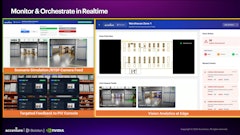
Maritime transport is the backbone of international trade and the global economy. The World Trade Organization (WTO) estimated global trade to fall by 7.4% in 2020. And ever since, multiple factors have created precedented challenges for small and medium-sized businesses (SMBs) in cross-border trade. Although September’s future predictions imply that a return to the business-as-usual status quo is expected over the next year, the situation is still fragile.
SMBs are now struggling with newer concerns as a teetering supply chain moves into a winter marked by erratic climate, employee strikes/shortages, COVID-19 spurts in China, political upheavals worldwide, etc. Moreover, the Fed’s recently increased interest rates have added to the stressful global business ecosystem.
Tech to the rescue
Considering the market dynamics, SMBs must become more conscious about effectively managing their post-arrival operations to optimize costs. In this regard, digitization of the supply chain will play a critical role in addressing the vulnerabilities and building robust processes.
Investments in technology will ensure the following:
- Effective planning and cost analysis
The increased reach of the internet, its affordability and virtually unlimited data storage have allowed artificial intelligence (AI), the Internet of Things (IoT) and blockchain to accelerate. This has created innovative ways to track products both upstream and downstream in a supply chain, establishing greater transparency that can aid in meeting supplier and customer expectations. For instance, investments in technologies like container tracking tools create auto-updated notifications that anticipate and mitigate risks, thus improving traceability.
Technology will also help in planning and managing demurrage and detention costs effectively. Although such charges are incurred to compensate the shipping line, guarantee quick turnaround time and drive efficiency, poor supply chain visibility, the lack of real-time updates can cause demurrage and detention costs to fluctuate. Fortunately, blockchain and IoT are seen as veritable game changers due to their inherent remote monitoring and decentralization capabilities.
- Digitization of data
Blockchain also allows companies to document production updates to a single shared ledger, thus providing complete data visibility to all stakeholders throughout the shipping process. This also ensures complete tracking of goods and that adequate quality control measures are in place.
It even helps FinTech players provide quick financing to SMBs by verifying documents in real time, eliminating the risk of fraud. IoT, on the other hand, can give cargo owners a comprehensive view of their flows and costs.
- Smooth shipping operations
Shippers are struggling with delivery delays, lead time variances and the added burdens of detention and demurrage. Thus, incorporating technologies such as predictive ocean freight and analytics and using real-time predictive data visibility to mitigate supply chain risks significantly is a viable option.
Instead of collecting information from disparate sources, predictive ocean freight systems automatically collect data, turning it into usable insights by accurately predicting container arrival times and cargo demand. AI and machine learning-driven data assessment tools improve synchronization and acceleration of operations during shipping, especially in sleeping containers, deviations or port congestions. This reduces the dependency on shipping lines and port operators and ensures a smooth and hassle-free shipping operation.
Looking ahead
Keeping up with volatile markets, changing consumer demands and shipping trends can be challenging in the best of times. Staying ahead of the competition has become paramount now more than ever. Hence, SMBs need to leverage technology to allow data to be available in a single, easy-to-use analytics dashboard. This will help maintain stakeholder relations, choose the optimum trade routes, plan business operations and ensure the timely delivery of goods, making SMBs better prepared to weather the current storm.



















